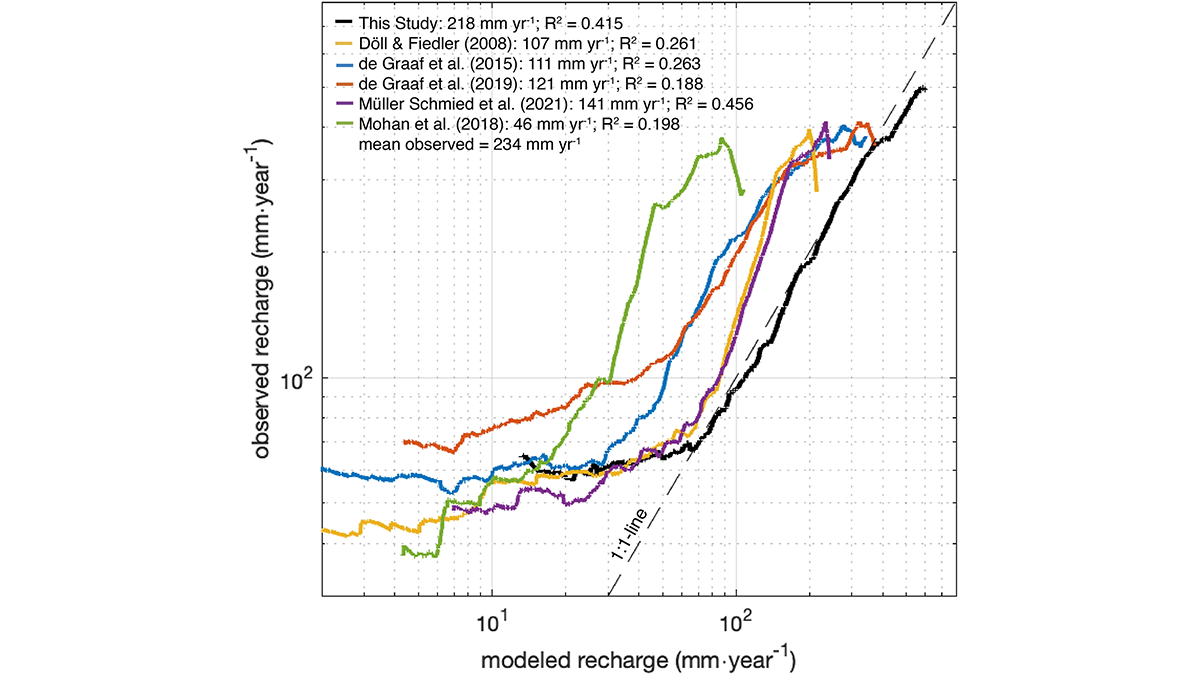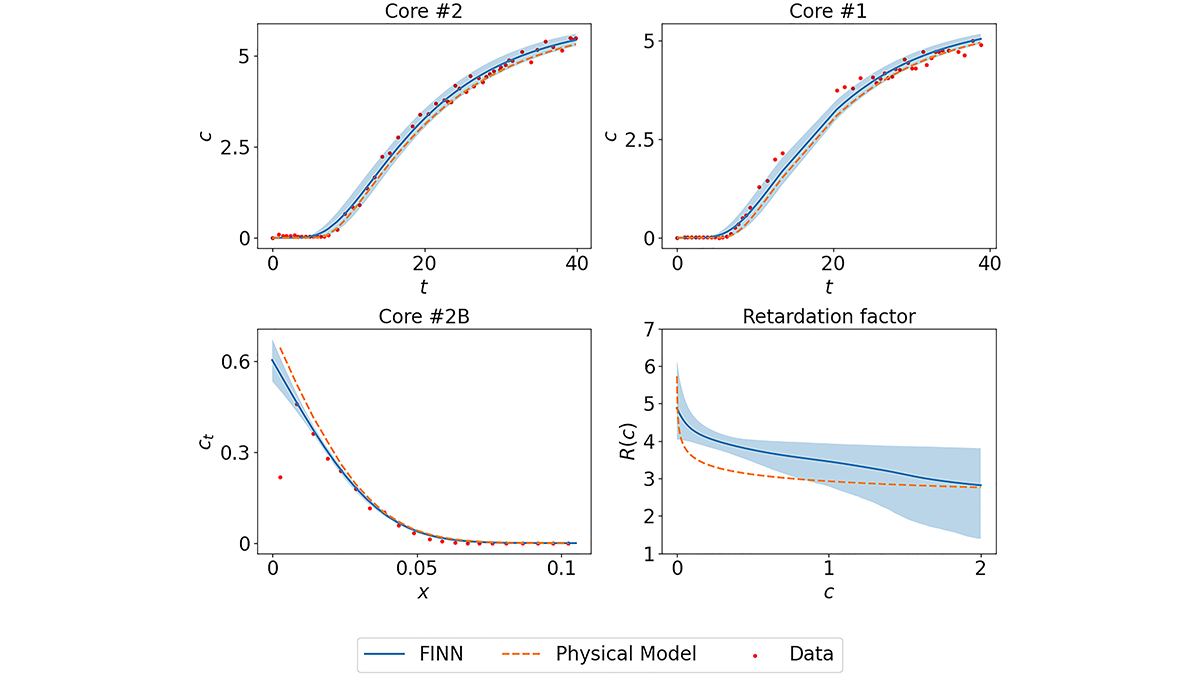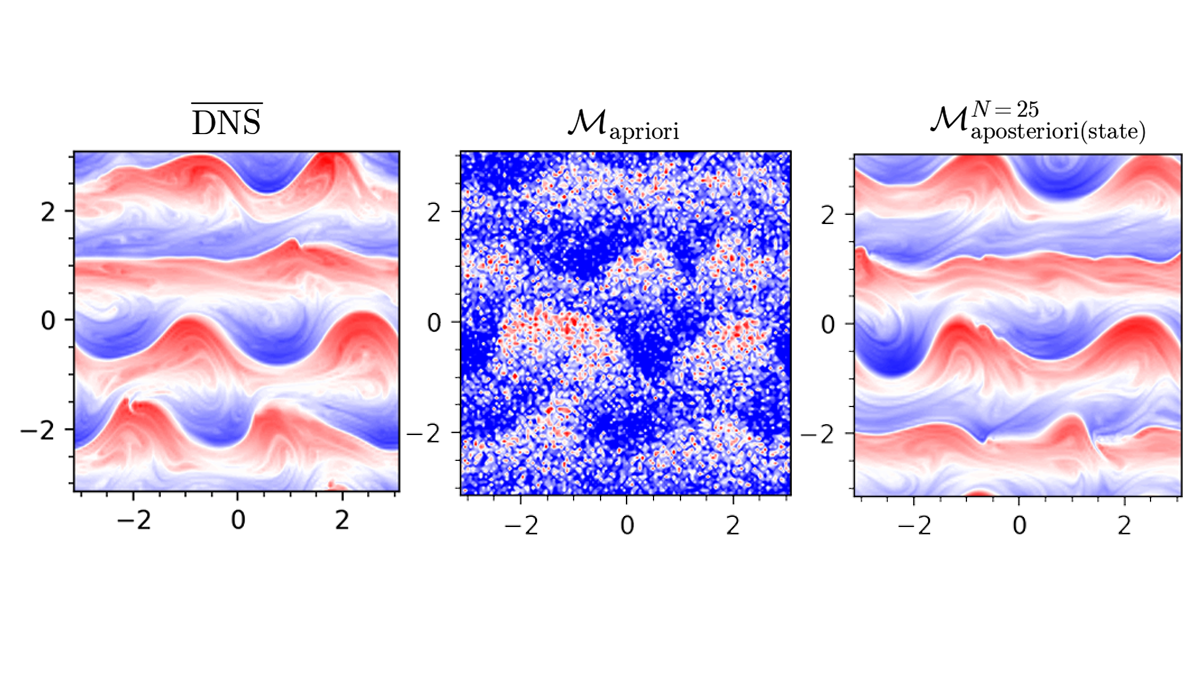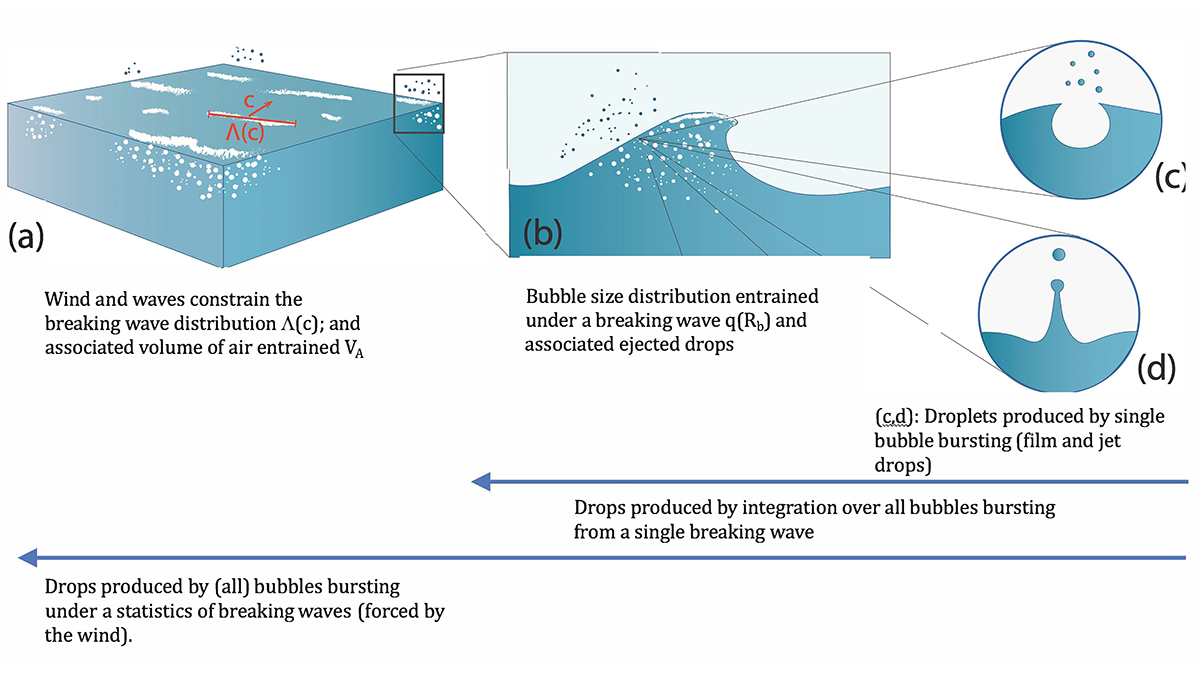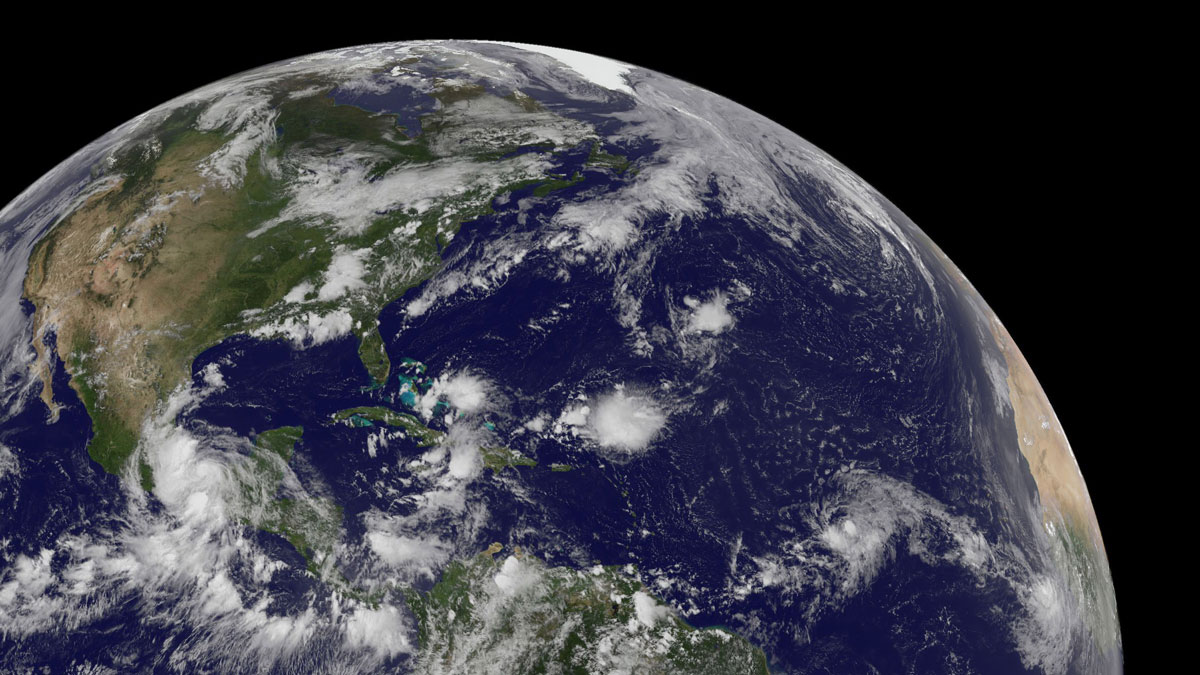A new estimate for global groundwater recharge by rainfall and snowmelt, which dictates the upper limit of sustainable groundwater use, doubles the previous estimates from global models.
Modeling
Playing Bricks with Neural Networks to Learn Sorption Processes
Designated neural network modules are combined to mimic numerically-discretized diffusion-sorption equations, which allows learning “missing pieces” in system understanding and their uncertainties.
Interactive Learning for Better AI-Based Subgrid-Scale Modeling
A study shows that interactive learning can significantly enhance the performance of artificial intelligence-based parameterization of small-scale processes, a critical component of climate models.
To Estimate Plant Water Use, Consider the Xylem
New research shows that chemical isotopes from plant xylem can improve representations of the forest water cycle.
An Innovative Approach to Model Complex Hurricane Flood Hazards
A new study shows that it is possible to produce regional assessments of how hurricane flood hazards change due to both evolving storm tides and precipitation rates in a warming climate.
A New Approach to Sea Spray Aerosol Production and Prediction
Sea spray aerosols play a critical role in atmospheric processes. A new approach is in strong agreement with observations, paving the way for improved models of atmospheric aerosols of oceanic origin.
El derretimiento del hielo marino del océano Ártico potencia las mareas
Si el cambio climático anula el ciclo estacional de hielo y deshielo, se desencadenaría un ciclo de retroalimentación de derretimiento del hielo marino en algunas partes del Ártico canadiense.
Eminently Complex – Climate Science and the 2021 Nobel Prize
The 2021 Nobel Prize in Physics was awarded for climate modeling and for the discovery of multifractals to describe intermittency and the scaling dynamics of climate variables, including extremes.

